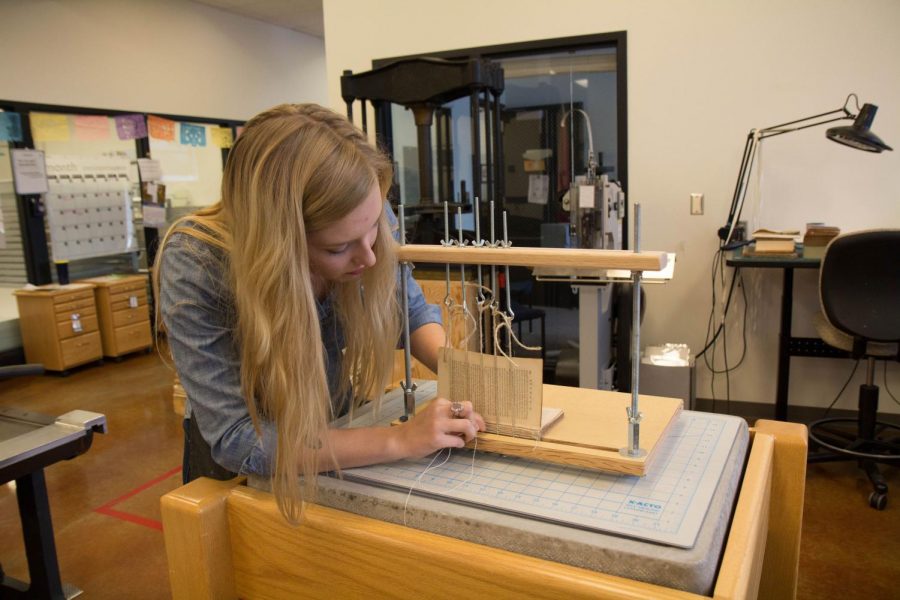Studio creates sustainable paper
Anneka Vetter rebinds an old book before its eventual encasement in Fresh Press Studio’s case paper at the Oak Street Library on Friday. The studio is working to create sustainable paper.
Nov 8, 2018
Though people have been making paper out of wood since the 19th century, a studio at the University is developing sustainable paper using non-wood recycled materials that can protect the environment and help protect relic books in libraries.
Eric Benson, co-founder of Fresh Press Studio, said he and his colleague were inspired to make paper from agricultural materials from the corn surrounding them in Illinois and the 1,000-year history of making paper from agricultural materials in China.
Mark Taylor, associate professor in the Department of Architecture, said in an email he is interested in the studio’s handmade paper and the paper is beautiful.
Taylor, who is researching how to turn agricultural waste into insulation for buildings, said combining agricultural materials to create paper is important to building a sustainable future.
Benson said the biggest difference between their paper and other existing recycled papers is that their paper will use no wood at all. The studio will only use agricultural products, such as harvest waste from the Sustainable Student Farm, to make the paper.
Get The Daily Illini in your inbox!
“Agricultural products as paper have a significantly smaller environmental footprint than paper using tree fibers,” Benson said.
Compared to the traditional paper industry, Benson said using agricultural material can enhance sustainability and accelerate the growth cycle of raw materials, which regenerate faster than trees.
Because of the shorter growth cycle of agricultural materials like wheat, using agricultural material can also decrease production costs associated with making paper. Benson said some companies in the paper industry are considering shifting to agricultural materials.
Benson said they are still trying to find the best combination of materials to make recycled paper. He said he believes their product can help protect the environment and help the world cut down on carbon emissions in the future.
“This could be a huge piece of that puzzle,” he said. “It is not the solution, but it is part of the solution.”
Jennifer Hain Teper, head of Preservation Services at the University Library, said she has been working with Benson since the spring.
“To the world of book conservation, (the recycled paper) is actually a great deal of potential,” she said.
Teper said the paper Benson made is very necessary for book conservation, because the paper is durable and provides the same texture and flexibility of the pages of a relic book.
“It has a strong potential to be less expensive to make, and we are all concerned about the sustainability, so this is obviously very interesting to us,” she said.
Teper said when the paper can replicate how relic books bend and age, it would be appealing to have cheaper paper to rebuild covers and pages inside the book, which would allow the public to see and feel what the books were like originally.
“On a national scale, to be able to develop something, and bring back to the conservation community and to make an impact on future conservation across the U.S. and across the world for books, that is a fantastic opportunity,” Teper said.






